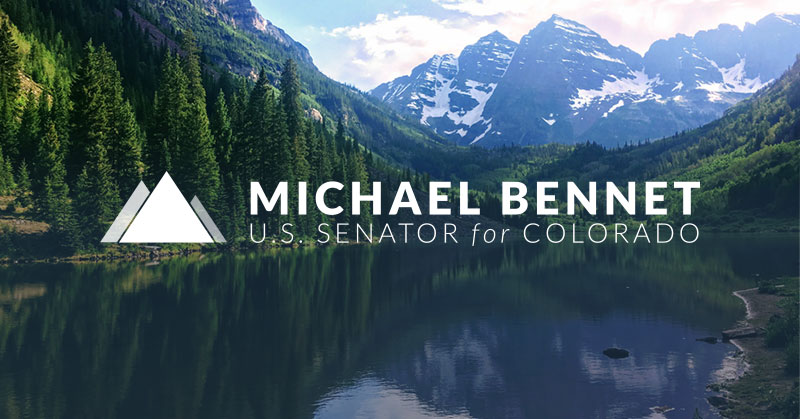Source: United States Senator for Colorado Michael Bennet
Denver – Today, Colorado U.S. Senator Michael Bennet and Colorado U.S. Representative Joe Neguse welcomed $720,890 in funding through the U.S. Department of Agriculture’s Joint Chiefs’ Landscape Restoration Partnership (Joint Chiefs’) for the Southern Front Range Watershed Project in Colorado. The Joint Chiefs’ program supports efforts across the West to mitigate wildfire risk, improve water quality, and restore healthy forest ecosystems. Bennet worked to pass an amendment through the Infrastructure Investment and Jobs Act (IIJA) to formally authorize Joint Chiefs’, based on legislation he introduced with Neguse, U.S. Senator John Hoeven (R-N.D.), U.S. Representative Kelly Armstrong (R-N.D.), and U.S Representative Abigail Spanberger (D-Va.).
“I’m pleased the Southern Front Range Watershed Project in Colorado will receive critical funding this year through the Joint Chiefs’ program,” said Bennet. “We’ve seen firsthand on the ground how critical this program is in Colorado to support projects that mitigate damage from wildfires. I’m grateful for Senator Hoeven’s and Representative Neguse’s partnership to authorize the program in the bipartisan infrastructure bill, and I’m glad to see this new funding coming to Colorado. I look forward to seeing more Joint Chiefs’ projects authorized in Colorado in the years ahead.”
“The Joint Chiefs Landscape Restoration Partnership was critical in 2020 in holding off the advance of the record-setting Cameron Peak wildfire, and it is essential we continue to expand it to support future wildfire resiliency and recovery efforts,” said Neguse. “I was thrilled to see our formal authorization, led alongside Senator Michael Bennet, enacted through the Bipartisan Infrastructure Law and we’re grateful that funding is now flowing to local communities, including Colorado’s southern front range watershed to invest in wildfire resiliency, watershed protection and post-disaster recovery.”
The funding will support the new Southern Front Range (SFR-JCLRP) project in Colorado. This will treat vegetation in the project area within Pueblo, Custer, Huerfano, and Las Animas counties. Treatments would be adjacent to or near the towns of Cuchara, Aguilar, Stonewall, Wetmore, Westcliffe, Beulah, and Rye, Colorado. There are approximately 12,600 structures within the project area and a collective population of about 12,000 full-time residents, with another 1,000 part-time residents. An estimated 1/3 of the full-time residents in the project area are Hispanic, including some areas of 50% or more minority residents. The Colorado State Forest Service Wildfire Risk map shows wildfire risk in the project area as moderate to high, with some areas of very high risk spread throughout. Fire intensity is shown as moderate to highest across most of the project area. Significant portions of the project area are in the high to highest priority areas on the overall composite map of the 2020 Colorado State Forest Service Action Plan. This project would address these priorities by decreasing vegetation densities and fuel loading on public and private lands, thereby reducing the potential for large, crown dominated fire and improving forest health.
Multiple partners are committed to reducing wildfire risk in this project area including the Arkansas River Watershed Collaborative (ARWC), Purgatoire Water Partners (PWP), the City of Trinidad, the Spanish Peaks Alliance for Wildfire Protection (SPAWP), the eight Firewise USA communities in the project area, local water conservation districts, local fire protection districts, and county officials.
In total, this funding will support 41 projects and includes $15.3 million for 17 new projects and $33 million to complete work on 24 projects previously selected in 2020 and 2021. Through the projects, USDA’s Forest Service (FS) and Natural Resources Conservation Service (NRCS) are working hand-in-hand with agricultural producers, forest landowners, and National Forest System lands to improve forest health using available Farm Bill conservation programs and other authorities.
